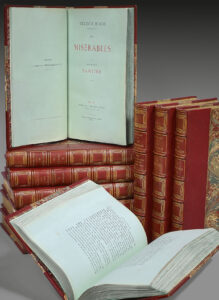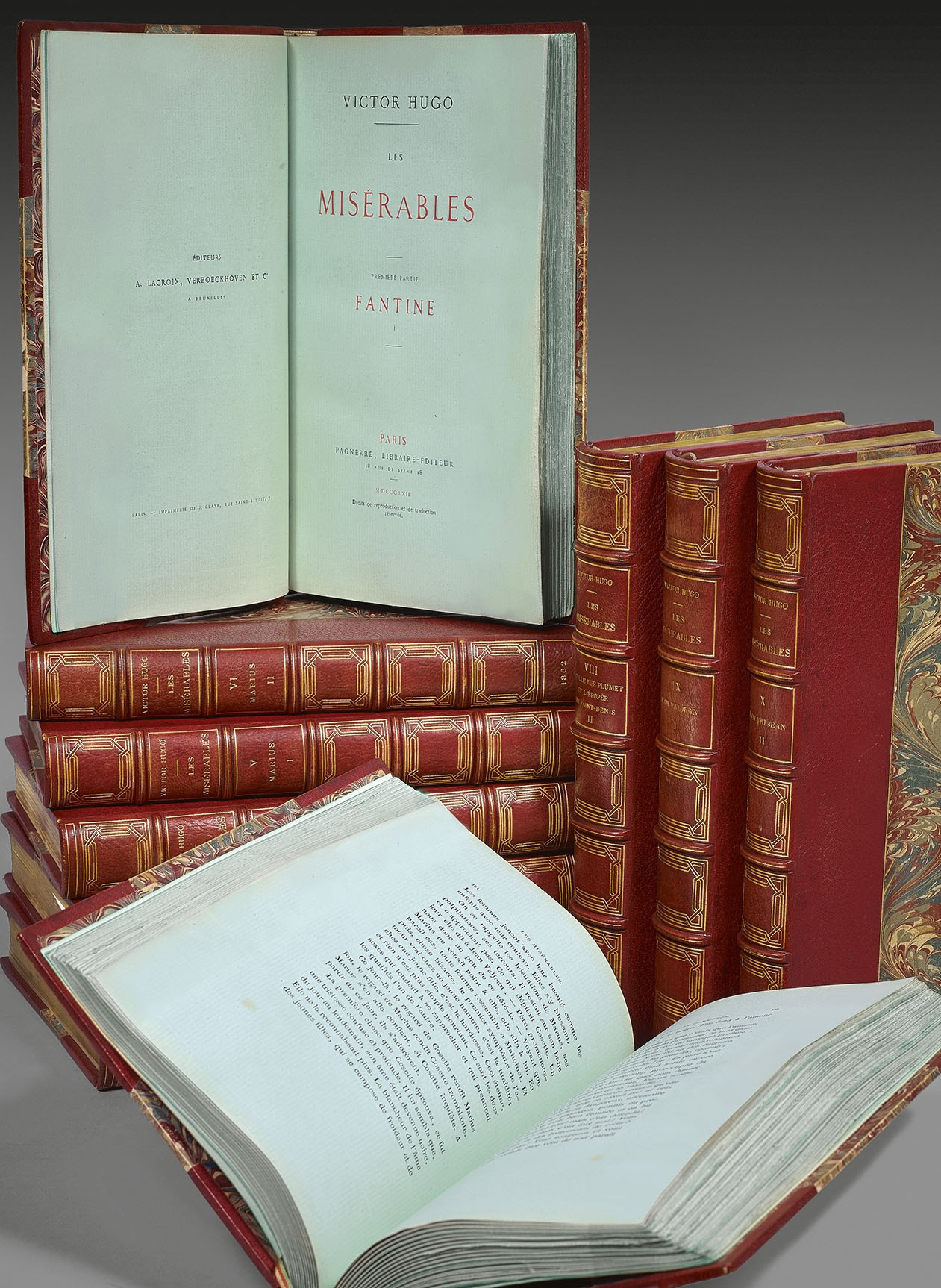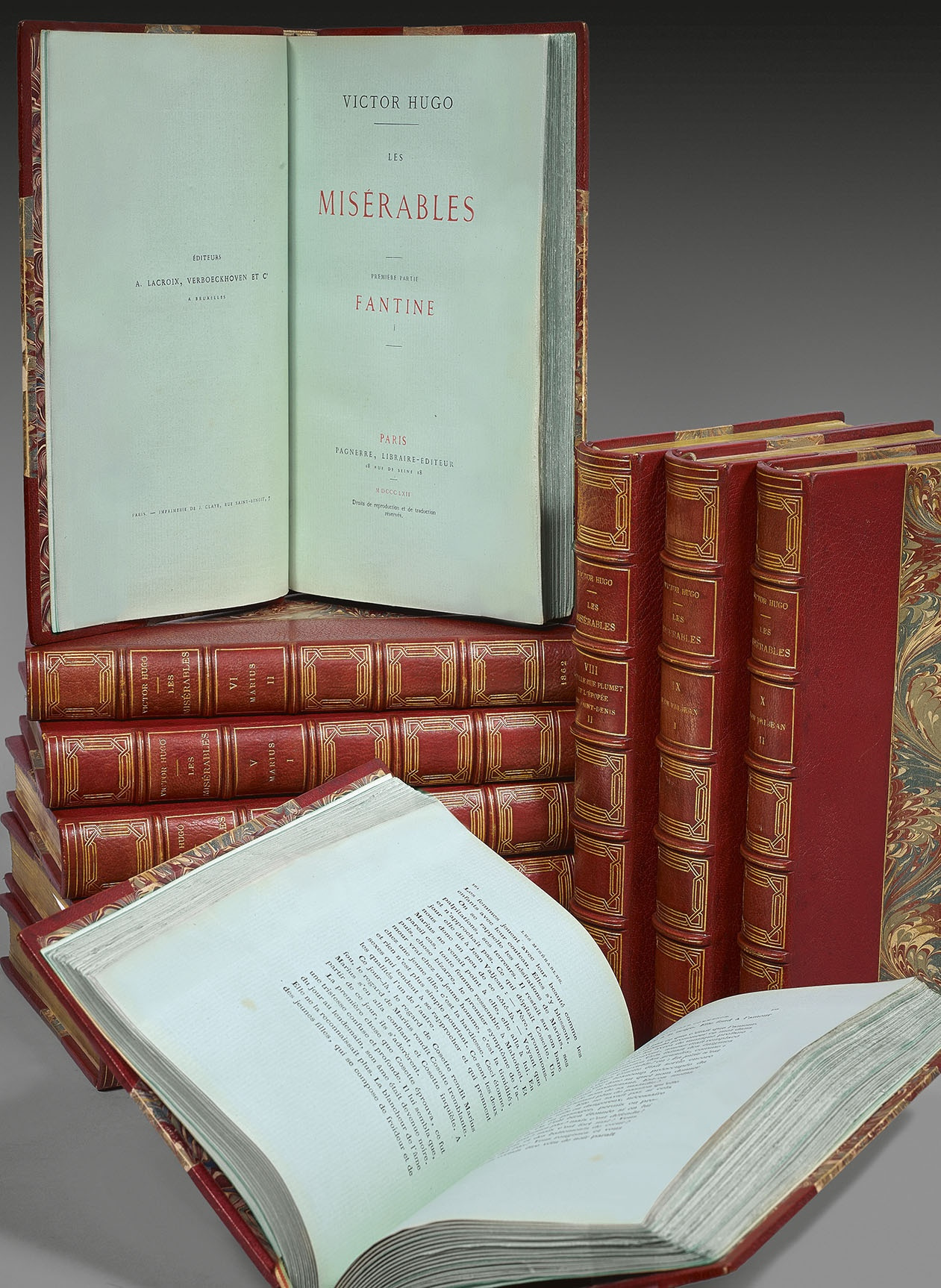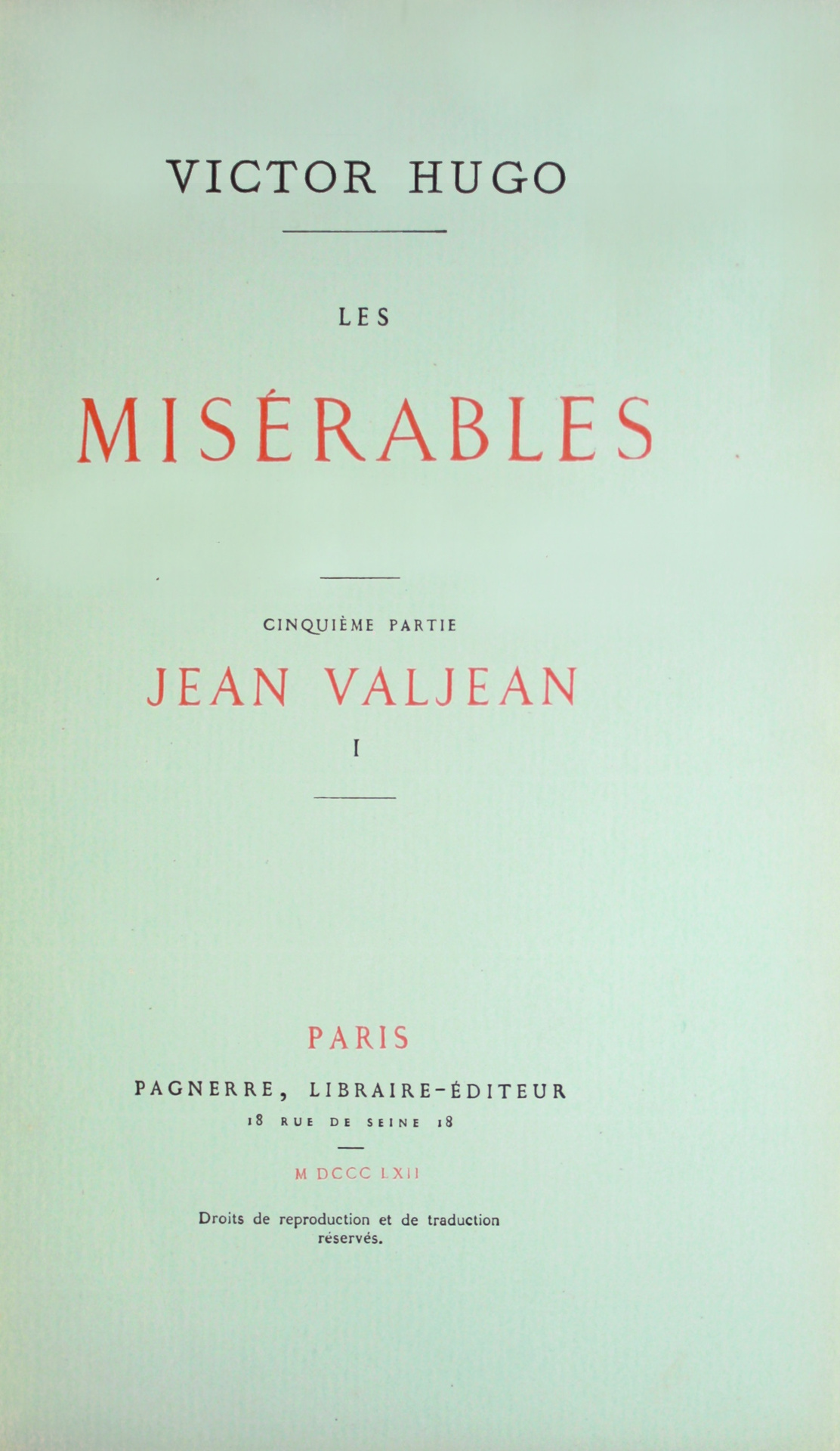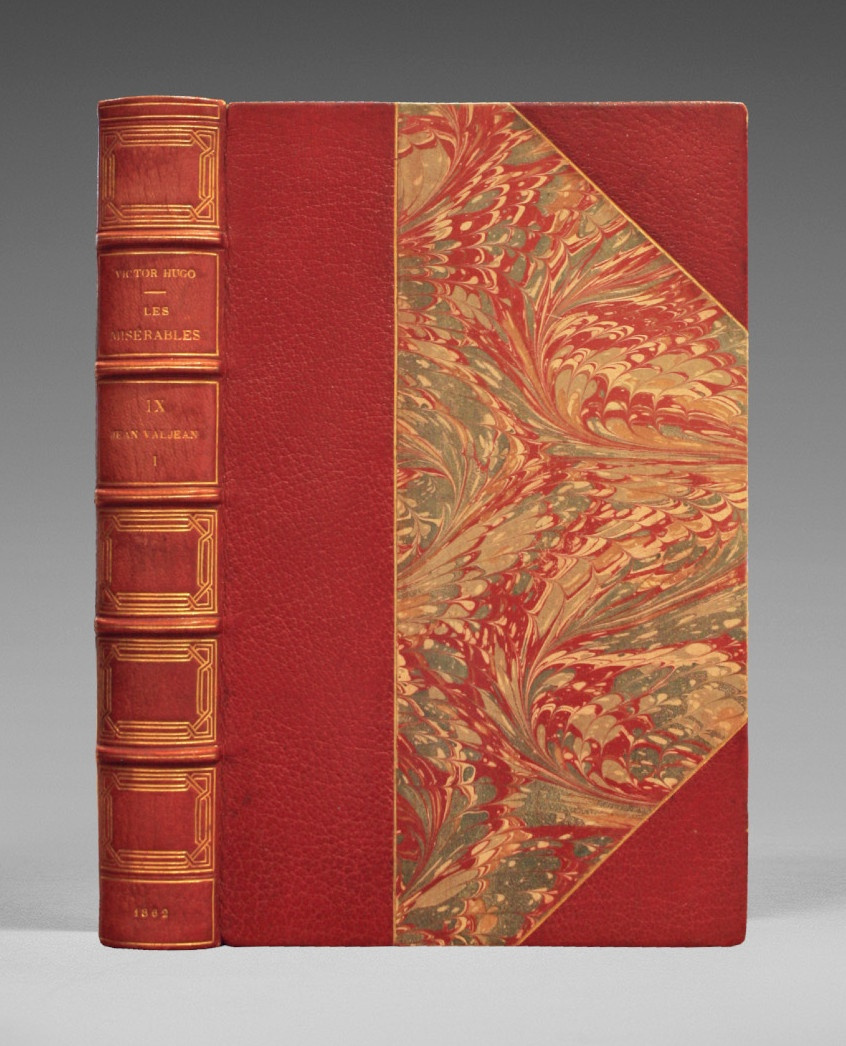Paris, Pagnerre, 1862.
10 large 8vo volumes [238 x 150 mm] of: I/ (4) ll., 357 pp. (misnumbered 355), (1) bl.l., 2 illustrations out of pagination; II/ (2) ll., 382 pp., (1) bl.l., 2 illustrations out of pagination; III/ (2) ll., 358 pp., (1) bl.l., 2 illustrations out of pagination; IV/ (2) ll., 318 pp., (1) bl.l., 2 illustrations out of pagination; V/ (2) ll., 320 pp., 1 illustration out of pagination; VI/ (2) ll., 297 pp., (1) bl.l., 2 illustrations out of pagination; VII/ (2) ll., 432 pp., 2 illustrations out of pagination; VIII/ (2) ll., 399 pp., 3 illustrations out of pagination; IX/ (2) l., 400 pp., 2 illustrations out of pagination; X/ (2) ll., 311 pp., 2 illustrations out of pagination, (2) ll. of album. Suite of 20 copper-engravings by Outhwaite after Castelli and De Neuville, published by Lacroix and Verboecken in 1869. Illustrated wrappers of the suite bound at the end of part 10.
Red quarter-morocco, gilt fillets on the corners and joints, spines ribbed and decorated with gilt fillets and Greek gilt patterns, top edge gilt, many untrimmed edges. Contemporary binding signed by Champs.
First French edition of this grêt novel by Hugo, large social indictment, published during the author’s exile in Guernsey. Copy from the first issue, without any mention of edition. Clouzot, Guide du bibliophile, 150 ; Talvart, IX, p.40 ; Carteret, I, 421.
“Major work universally esteemed. One of the grêtest best-sellers, it is one of the books the most sold; it is sold and will be sold for a long time” (Carteret).
One of the very few copies printed on sê-green paper of Victor Hugo’s fictional masterpiece. Bibliographers mention that “a few copies” have been printed on Dutch paper and on sê-green paper “which are extremely rare”. Carteret mentions three copies on Dutch paper but none on sê-green paper. As for Vicaire, he only mentions one sê-green paper copy, the one of Jules Janin. Copies from the deluxe issue on coloured paper were distributed only later. After the liquidation of the editor Lacroix, among the 25 that existed, less than ten survived and no wrappers were made.
Started in 1845, in a feeling of indignation and pity, this generous epic tale of the people, fruit of a long elaboration would only be achieved in 1861, during Guernsey’s exile. Les Misérables comes at countercurrent of the aesthetical choices of the time: tendency to “impassiveness” and “school of Art for the Art”. Hugo clêrly settles the mission of his book in the Foreword: “So long as there shall exist, by virtue of law and custom, a social damnation artificially crêting hells in the midst of civilization, … so long as such wretchedness exists on êrth, papers like this must be written”.
“Les Misérables” immediately stood out despite the first reluctance of the critics and the popular success was huge.
Many bibliographers, such as Talvart, see in Pagnerre’s edition the true first edition. It is now established that the Belgium edition preceded the French edition of a few days.
This novel was the grêtest success of 19th century edition.
An exceptional copy of grêt freshness, with very wide margins as mostly untrimmed, very elegantly contemporary bound by Champs.
The copy is enriched with the suite of 20 copper-engravings by Outhwaite after Castelli and De Neuville, published by Lacroix and Verboecken in 1869, with the illustrated wrappers of the album.
See less information
